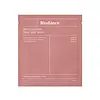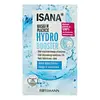What's inside
What's inside
 Key Ingredients
Key Ingredients

 Benefits
Benefits

 Concerns
Concerns

 Ingredients Side-by-side
Ingredients Side-by-side

Water
Skin ConditioningGlycerin
HumectantAcrylates Copolymer
Niacinamide
SmoothingCeratonia Siliqua Gum
EmollientChondrus Crispus Extract
Skin ConditioningDipropylene Glycol
HumectantBetaine
HumectantAlgin
Masking1,2-Hexanediol
Skin ConditioningHydroxyacetophenone
AntioxidantButylene Glycol
HumectantPotassium Chloride
Agar
MaskingCaprylyl Glycol
EmollientSucrose
HumectantAllantoin
Skin ConditioningPolyglyceryl-10 Laurate
Skin ConditioningEthylhexylglycerin
Skin ConditioningGalactomyces Ferment Filtrate
HumectantAdenosine
Skin ConditioningDisodium EDTA
Pyrus Communis Fruit Extract
Skin ConditioningRosa Damascena Flower Water
MaskingCollagen Extract
Skin ConditioningIris Florentina Root Extract
MaskingCucumis Melo Fruit Extract
Skin ConditioningHedera Helix Leaf/Stem Extract
AntimicrobialDipotassium Glycyrrhizate
HumectantHydrolyzed Hyaluronic Acid
HumectantLactobacillus Ferment
Skin ConditioningBifida Ferment Filtrate
Skin ConditioningLactobacillus Ferment Lysate
Skin ConditioningTocopherol
AntioxidantWater, Glycerin, Acrylates Copolymer, Niacinamide, Ceratonia Siliqua Gum, Chondrus Crispus Extract, Dipropylene Glycol, Betaine, Algin, 1,2-Hexanediol, Hydroxyacetophenone, Butylene Glycol, Potassium Chloride, Agar, Caprylyl Glycol, Sucrose, Allantoin, Polyglyceryl-10 Laurate, Ethylhexylglycerin, Galactomyces Ferment Filtrate, Adenosine, Disodium EDTA, Pyrus Communis Fruit Extract, Rosa Damascena Flower Water, Collagen Extract, Iris Florentina Root Extract, Cucumis Melo Fruit Extract, Hedera Helix Leaf/Stem Extract, Dipotassium Glycyrrhizate, Hydrolyzed Hyaluronic Acid, Lactobacillus Ferment, Bifida Ferment Filtrate, Lactobacillus Ferment Lysate, Tocopherol
Water
Skin ConditioningGlycerin
HumectantAloe Barbadensis Leaf Juice
Skin ConditioningCoco-Caprylate
EmollientDicaprylyl Carbonate
EmollientMacadamia Integrifolia Seed Oil
Skin ConditioningPolyglyceryl-3 Methylglucose Distearate
EmulsifyingTheobroma Grandiflorum Seed Butter
Skin ConditioningPanthenol
Skin ConditioningPhenoxyethanol
PreservativeButylene Glycol
HumectantXanthan Gum
EmulsifyingSclerotium Gum
Emulsion StabilisingParfum
MaskingSodium Hyaluronate
HumectantEthylhexylglycerin
Skin ConditioningCitric Acid
BufferingPantolactone
HumectantBenzyl Alcohol
PerfumingLinalool
PerfumingWater, Glycerin, Aloe Barbadensis Leaf Juice, Coco-Caprylate, Dicaprylyl Carbonate, Macadamia Integrifolia Seed Oil, Polyglyceryl-3 Methylglucose Distearate, Theobroma Grandiflorum Seed Butter, Panthenol, Phenoxyethanol, Butylene Glycol, Xanthan Gum, Sclerotium Gum, Parfum, Sodium Hyaluronate, Ethylhexylglycerin, Citric Acid, Pantolactone, Benzyl Alcohol, Linalool
 Reviews
Reviews

Ingredients Explained
These ingredients are found in both products.
Ingredients higher up in an ingredient list are typically present in a larger amount.
Butylene Glycol (or BG) is used within cosmetic products for a few different reasons:
Overall, Butylene Glycol is a safe and well-rounded ingredient that works well with other ingredients.
Though this ingredient works well with most skin types, some people with sensitive skin may experience a reaction such as allergic rashes, closed comedones, or itchiness.
Learn more about Butylene GlycolEthylhexylglycerin (we can't pronounce this either) is commonly used as a preservative and skin softener. It is derived from glyceryl.
You might see Ethylhexylglycerin often paired with other preservatives such as phenoxyethanol. Ethylhexylglycerin has been found to increase the effectiveness of these other preservatives.
Glycerin is already naturally found in your skin. It helps moisturize and protect your skin.
A study from 2016 found glycerin to be more effective as a humectant than AHAs and hyaluronic acid.
As a humectant, it helps the skin stay hydrated by pulling moisture to your skin. The low molecular weight of glycerin allows it to pull moisture into the deeper layers of your skin.
Hydrated skin improves your skin barrier; Your skin barrier helps protect against irritants and bacteria.
Glycerin has also been found to have antimicrobial and antiviral properties. Due to these properties, glycerin is often used in wound and burn treatments.
In cosmetics, glycerin is usually derived from plants such as soybean or palm. However, it can also be sourced from animals, such as tallow or animal fat.
This ingredient is organic, colorless, odorless, and non-toxic.
Glycerin is the name for this ingredient in American English. British English uses Glycerol/Glycerine.
Learn more about GlycerinWater. It's the most common cosmetic ingredient of all. You'll usually see it at the top of ingredient lists, meaning that it makes up the largest part of the product.
So why is it so popular? Water most often acts as a solvent - this means that it helps dissolve other ingredients into the formulation.
You'll also recognize water as that liquid we all need to stay alive. If you see this, drink a glass of water. Stay hydrated!
Learn more about Water